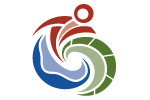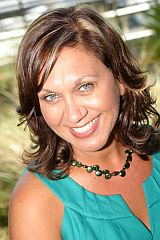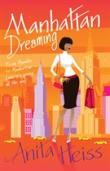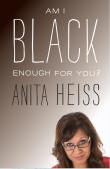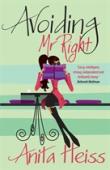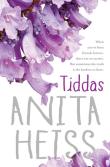AustLit
-
Over the past four months BlackWords has published a series of interviews you undertook with prominent Aboriginal and Torres Strait Islanders. Could you reflect upon the importance of that project and upon the insights and comments of the collective of excellent writers? Kerry Kilner, AustLit Director, turned the tables on Anita and asked her some of the same questions.
-
I constantly meet people who are surprised at the number of Indigenous authors there are in Australia. When they read interviews like those in the BlackWords series, they are further astounded by the breadth and depth of our collective works. The series therefore goes a long way in challenging notions of what Indigenous writing is, who is writing it, and what we are writing about.
At the same time, as educators move to embed Indigenous perspectives into their own classrooms, this series provides a unique voice and insight to Australian students.
Explore Anita Heiss's AustLit Record
-
There is currently a renaissance in Indigenous writing as authors across genres are publishing stories that reflect not only the diversity of who we are today, but also demonstrate the skills we have collectively honed over time. It’s an exciting time with an explosion of fiction writing in particular. This is highlighted by the black+write program at the State Library of Queensland and the Laguna Bay Press / Oxford University Press educational series titled Yarning Strong.
-
BlackWords, of which you were the inaugural National Coordinator, has become an important feature in the landscape of Australian literary and cultural studies. What do you think it offers researchers, readers and students, and what directions should it take in the future?
I like to pride myself on the fact that through BlackWords one can find a novel, poem, essay etc. on almost any Australian subject, and that is why this resource is essential to embedding Indigenous Studies into the national curriculum. I know that BlackWords is the one-stop shop of everything written and published by Aboriginal and Torres Strait Islander writers and storytellers across genres, and it’s the only resource of its kind in the world.
Through accessing the works indexed into BlackWords, researchers, educators, students, and general readers can get not only a fantastic insight the history of our literature, but also a comprehensive look at how we document our world views and why.
I’d like to see literary trails done on more topics and nations and it would be great to have more essays and critical work available for download from the site.
-
Now, after the revelations you elicited from the nineteen previous writers, would you share with us some similar insights into your reading, the inspirations that make you the writer you are today, and your ideas on how to be a successful writer?
Well, in short, I’d say I read largely because I want to be a better writer, and reading shows me what works on the page. Reading helps me understand my own voice better and how I can challenge myself as a writer and hopefully improve my writing technique. And reading widely also lets me know what is in the marketplace and what gaps need to be filled.
-
I’m a Williams; my mob’s from Cowra, Brungle Mission, Griffith, and Canberra, but I was born in Gadigal country (aka the city of Sydney) and have spent most of my life living on Dharawal land at Matraville, which is strategically placed between the Malabar sewage works, Long Bay Gaol, and the Orica industrial estate. It’s a place where I grew up playing cricket in the street, walked safely to and from school each day, and where neighbours always had a spare key to the house. I am affectionately known as concrete Koori with Westfield Dreaming, I’m an urban, beachside Blackfella and I apologise to no one.
-
I think Kath Walker’s We Are Going, which includes her 'Charter of Aboriginal Rights', remains the most influential book in my life. Whenever I talk about Aboriginal literature, I always revert to this volume, as it was the first collection of poetry published by a First Nations writer in Australia, and many of the issues she raised back in 1964 are, sadly, still relevant today.
On a personal level, and to find my own sense of inner peace, I would say that the Dalai Lama’s The Art of Happiness is something that had a great deal of impact. Interestingly, two different women who love me dearly gave me this book at the same time. I think it was a message.
-
P. M. Newton’s Beams Falling. It’s the follow up to The Old School and gives a gritty, insider look at crime in Sydney’s Cabramatta. Alice Pung’s Her Father’s Daughter. The writing and story was so powerful it brought me to tears.
-
The Adventures of Huckleberry Finn by Mark Twain. The Art of Happiness by the Dalai Lama. Unpolished Gem by Alice Pung and Maybe Tomorrow by Boori Monty Pryor (both Pung and Pryor’s books inspired me to write my own memoir Am I Black Enough for You?)
-
The Papunya School Book of Country and History – it is accessible to all and has everything – history, culture, artwork. Every Australian household should have a copy.
-
I was an avid pen pal as a teenager writing epic letters. Then my first ‘real’ job out of uni was working at Streetwize Comics, which opened my mind not only to writing comic scripts but columns, press releases and journal articles.
-
I wrote every chance I could, and published where I could to build up my publications list. I joined a writers’ centre in the 1990s and entered competitions. I have always supported other writers, and attended events to be part of a writing community and, in many ways, that helped me become a better writer. I don’t know that writing came naturally, but telling a story is something that is natural to me.
-
What do you love about writing?
-
I think writers who research well, take advice from professionals, read widely and know ‘why’ they are writing – beyond the need to tell their own story – will make ‘good writers’. Some of my favourite authors include a long list of Australian writers ... Susan Johnson, Alice Pung, Benjamin Law, Melissa Lucashenko, Alexis Wright, and more ...
-
I’m currently working on a project with visual artist Tony Albert that will pay tribute to Indigenous men and women who have served in the Armed Forces from the Boer War to the present. The memorial will be unveiled in Hyde Park in Sydney in 2015.
-
I find the motivation to write from nearly every book I choose to read. As a novelist, I am inspired at different times by the work of different authors. Right now, and based on my recent reading, I am inspired by the works of Alexis Wright, Melissa Lucashenko, P.M. Newton, and Kathryn Heyman. All Australian women writers.
-
Writing is not a game, unless you choose it to be. If you are serious about your work and want to be published, then give your writing priority. Enlist the services of professionals to guide you and provide you with a structural edit when it's time. Get a mentor. Attend writing workshops. Go to literary festivals and listen to those who have done the hard yards and will not only inspire you but can offer you key tips on writing process. Read widely across genres, geography, and gender. Know who has published what in your own genre so you understand the marketplace and what readers want. Join a writer’s centre – there is one in every state and territory.
And remember, no one can read a book that is in your head. You need to start writing!
You might be interested in...

